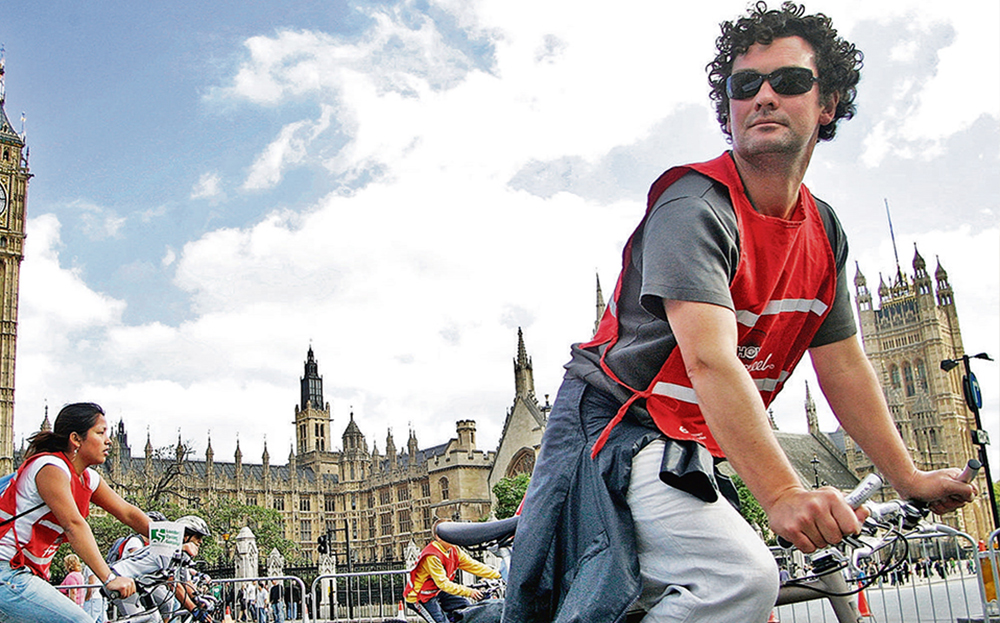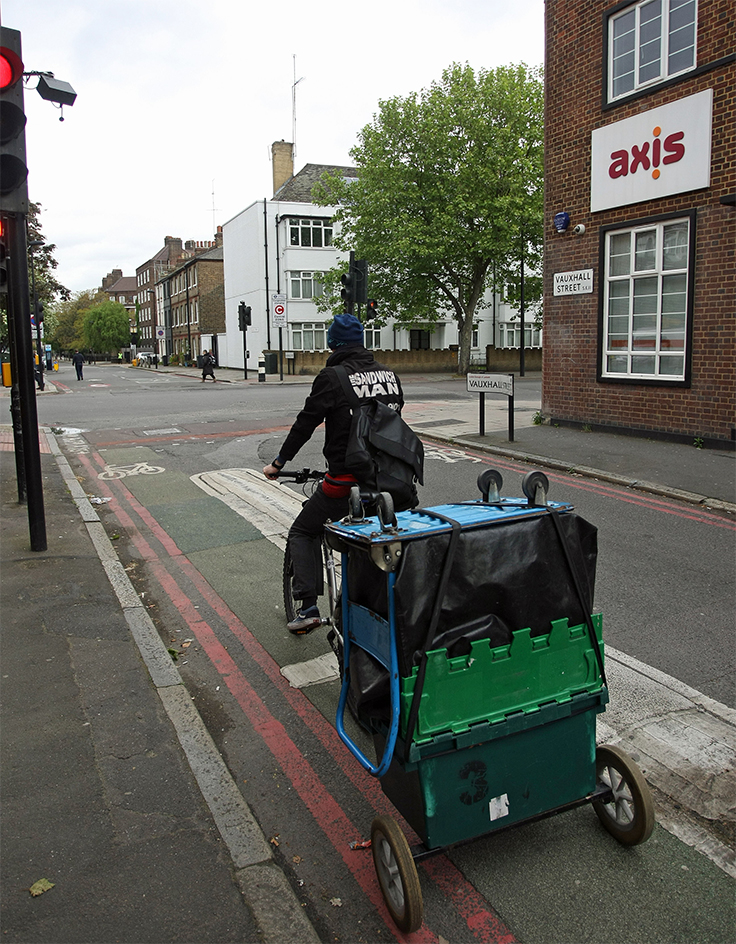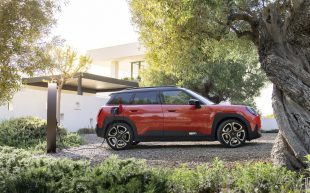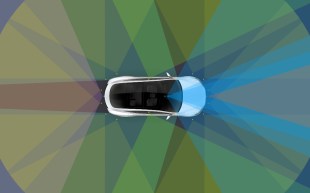Government plans to turn UK streets into 15mph cycle-friendly slow zones
Get thee behind me, motor - pedallers set the pace here

DOZENS OF urban streets in Britain could be redesignated as “cycle streets” under government plans that would also warn drivers not to exceed 15mph and ban them from overtaking bikes. The proposals, which would give cyclists priority wherever the new road signs were displayed, would in effect restrict traffic to the speed of the slowest cyclist there.
The proposals are part of a Department for Transport consultation, which closes next month, and are being championed by the roads minister Robert Goodwill. If accepted, the new legislation is likely to be adopted next year before the general election in May.
Lambeth council, in London, and Sustrans, a charity that campaigns for safer roads, have already begun work on plans to redesignate streets. This includes installing speed bumps that have a gap in the middle, which encourages cyclists to ride in the middle of the road and make overtaking virtually impossible. A coloured strip in the middle of the road — resembling a traditional cycle lane — and a new road sign warning drivers that they are entering a “cycle street” are also being considered. If the policy becomes law, police will have the power to issue a £100 fine and three-point penalty to any driver overtaking a cyclist.
The proposals drew criticism in a survey of motorists in Vauxhall Street in London, which could be one of the first to be designated a cycle street.
“Why are they slowing the traffic down to the speed of cyclists? It’s not progress,” said Ann Johnson, 34, a solicitor. “You can’t drive fast in town anyway, so I don’t know if this will improve safety.”
Goodwill said that new measures were needed to cut the rate of accidents. Between 2005 and 2009 an average of 2,528 cyclists were killed or seriously injured in Britain each year. The latest figures, for the 12 months to September 2013, show that 3,230 bicycle riders were killed or seriously hurt, an increase of 28%. “We hope we can make it that bit safer for cyclists,” said Goodwill. “If you have a narrow street where it’s a choice between making it a cycle-only lane or having cycles and vehicles but no overtaking, then [the latter] would be preferable for everybody.
“I wouldn’t envision a situation where there are large areas of a town where it’s 15mph and you can’t overtake a cycle.”

Vauxhall Street was chosen to test the plans because it is a one-way road that provides a handy shortcut for cyclists heading to or from the centre of London. Most cyclists using the existing route during rush hour last Wednesday seemed to be in favour of the change.
“This would make me feel 100% safer,” said Alice Gordon, 30, a restaurant reservations manager from Camberwell. “I think that if there were signs up, car drivers would obey them or choose a different route. The quieter and further away from traffic that we are, the less dangerous it is.”
Ian Parker, 44, thought that the scheme could move cyclists away from more crowded main roads. “It will encourage people to use these routes, said the IT consultant from Kingston. “Car drivers are mostly sensible; I think it will work well.”
Drivers may regard the proposals, set out in Traffic Signs Regulations and General Directions 2015, as a continuation of the war on motorists, which Philip Hammond, former transport secretary in the coalition government, pledged to end.
Hugh Bladon, of the Alliance of British Drivers, said: “It’s just plain daft: no one will drive at 15mph.
Drivers may regard the proposals, set out in Traffic Signs Regulations and General Directions 2015, as a continuation of the war on motorists
“Politicians live in a different world. The government said that it would end the war on motorists. In fact, they are notching it up all the time.
“All of this badgering [of drivers] is not doing any good at all, because 99% of motorists are sensible people who do not want to have an accident or injure anyone.
“If traffic is slowed to a crawl, drivers might as well leave their cars at home, even though they are paying a fortune in tax.”
Goodwill said that road-building programmes and the freezing of fuel duty were evidence that the government was not anti-car.
“You could argue that what we’ve done is make it clear that there is no war on the motorist. If there was before, I’m not sure, but there certainly is not now,” he said.

A Jaguar XJ driver, who holds a motorcycle licence and a class 1 HGV licence, entitling him to drive articulated lorries, Goodwill also owns a collection of steam traction engines and a De Dion Bouton car from 1900 that he has driven in the London to Brighton run.
Asked if being a car enthusiast made him a good roads minister, he said: “I’d hope so. I’m also a cycling enthusiast. I cycle in London each day, so I can understand the problems. I would have thought that being the roads minister without a driving licence is a bit like when the last government were in power and they had a load of vegetarians at Defra [the Department for Environment, Food and Rural Affairs].”
Goodwill does have some good news for drivers: overhead gantry signs on motorways that display out-of-date warning messages, which are often cited as one of the banes of drivers’ lives, could be killed off.
“I’ve got a downer on the Highways Agency,” he said. “When they have the variable message signs and there are no problems, don’t put anything on there, because it’s a distraction.
“ ‘Don’t drink and drive’. Well, I think that’s pretty obvious anyway. I’m not sure putting ‘Don’t drink and drive’ on a sign is going to deter anyone who was planning on drinking and driving.
“There may be times of the year and times of the day when it’s worth putting up a sign — ‘Take a break if you’re tired’ — but every additional message you put on the roadside is a distraction for the motorist who might be trying to concentrate on the traffic conditions.
“My message to the Highways Agency is: if you don’t need to tell the motorist anything, then don’t be afraid to leave the message blank. Yes, it does give a message, but it’s also potentially a distraction from other things that may be going on in the person’s car that they are also trying to be aware of.”
First volley fired in Bullitt turf war

CYCLISTS IN San Francisco are for the first time facing an organised backlash from drivers who claim that cars have been marginalised by authorities in favour of bikes.
Among the main gripes are that roads have been narrowed to make way for cycle lanes; in-demand parking spaces have been removed to give cyclists and pedestrians wider pavements; and drivers appear to be the only ones prosecuted for breaking the rules of the road while bike riders get away scot-free. Drivers also complain that they pay a disproportionate amount in fees and taxes compared with other road users.
The anger has led to the formation of a ragbag political movement to fight for drivers’ rights, complete with a motorists’ manifesto, which demands, among other things, that the city consult motorists before building cycle lanes and start prosecuting cyclists for jumping red lights.
Entitled Restoring Transportation Balance in San Francisco, the list of demands was presented to the city attorney late last month and has caused a stir in a town where cars and driving run deep in the local consciousness. The city is famous for hosting one of the greatest car chases in movie history, when Steve McQueen got behind the wheel of a 1968 Ford Mustang and slid and jumped his way through the streets in the film Bullitt.
The politicisation of the issue has split the community, and online forums are flooded with heated discussions of the manifesto’s merits. “The sleeping giant has awakened,” wrote one disgruntled driver. “Making the roads more congested for cars… by taking out parking spaces and removing lanes increases greenhouse gas emissions and pollution… If biking is such a great alternative, why are so many of them so surly?”
Another said: “This proposition will pass so fast and so hard the sonic boom will reverberate in the bike nuts’ ears for a decade. Welcome to the majority backlash.”
Cyclists hit back: “This ballot measure isn’t a backlash or groundswell of a silent majority. It is simply a symptom of the weaning pains of a group so accustomed to subsidies that they will do anything to hang on to them.” The manifesto is the first step in the attempt to force the city authorities to look at motorists’ gripes. Once it has been processed by San Francisco officials, the issue will be voted on by residents at local elections in November.




